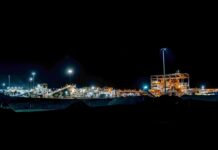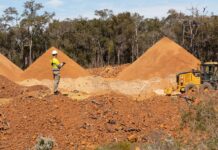Energy transition tops global mining trends: State of Play

Energy transition is now in the top three global trends that are expected to have the biggest impact on innovation in mining over the next 15 years, according to latest reports by State of Play.
The reports, entitled Mining Strategy in a Changing World and Unearthing Tomorrow: Trends Shaping the Future of Mining, analyse surveys and interviews with industry leaders to identify changes in attitudes and practices.
State of Play founder and chairman Graeme Stanway says the reports showcase a significant shift in attitudes towards the energy transition.
“In recent years the survey results were pretty evenly split between environmental pressures and technology. Now, energy is the dominant force,” he said.
The energy transition has seen a large shift in predicted impact on innovation in mining, from 54% in 2021 to 71% in 2023.
“The energy transition wasn’t even in the survey for the 2017 report. Then from 2019 to 2023 you can draw a straight line up as people respond that it will have the biggest impact on innovation,” Stanway said.
METS chief executive officer Adrian Beer says this presents an opportunity for the industry.
“This transition is a revolution, not evolution, for our industry,” he said.
“The industry has been renowned for optimising efficiency and productivity and squeezing every last drop out of resources.
“That’s how innovation has evolved for decades, but you can’t optimise your way to a clean energy transition. It requires fundamental change.
“You can’t just flick a switch to turn off existing mining operations which now need to produce more to supply the materials needed for that transition.”
Mining industry professionals report increased pressure from community expectations and higher bars for a social licence to operate, despite new mines being essential for an energy transition.
Mr. Beer says this results from a gap in understanding regarding what the current mining industry does.
“Scrutiny often focuses on symptoms, not the problem. It’s really easy to bash up mining because of the sector’s emissions,” he said.
Mr. Stanway adds that customers distance from the industry contributes to this gap.
“When a consumer of a product is five or six steps away from the process or the provenance, it gets harder,” he said.
In addition to mounting community expectations, the reports also reveal that 91% of industry believe they are viewed negatively by society with respect to the climate.
CSIRO discovery research director Dr Sandra Occhipinti says this adds to the challenges of energy transition.
“It’s not just about supply and demand anymore – it’s the cost of bringing emissions down and shortening discovery timeframes, but it’s a very delicate balance. We’re on a tightrope.”
Dr Occhipinti says transparent communication will be essential for mining companies.
“These reports show that the industry is showing an increased understanding that we need to be better at communicating what we’re doing, why we’re doing it and how,” she said.
The reports also emphasise that acknowledgement of cost pressures and social licence is more critical than ever.
An anonymous research organisation chief executive officer says balancing community desires with profitability is the key to future success.
“Whoever can find a way whereby we can deliver exceptional returns to investors in a way that’s acceptable to a broader community – that’s what’s going to win.”






















